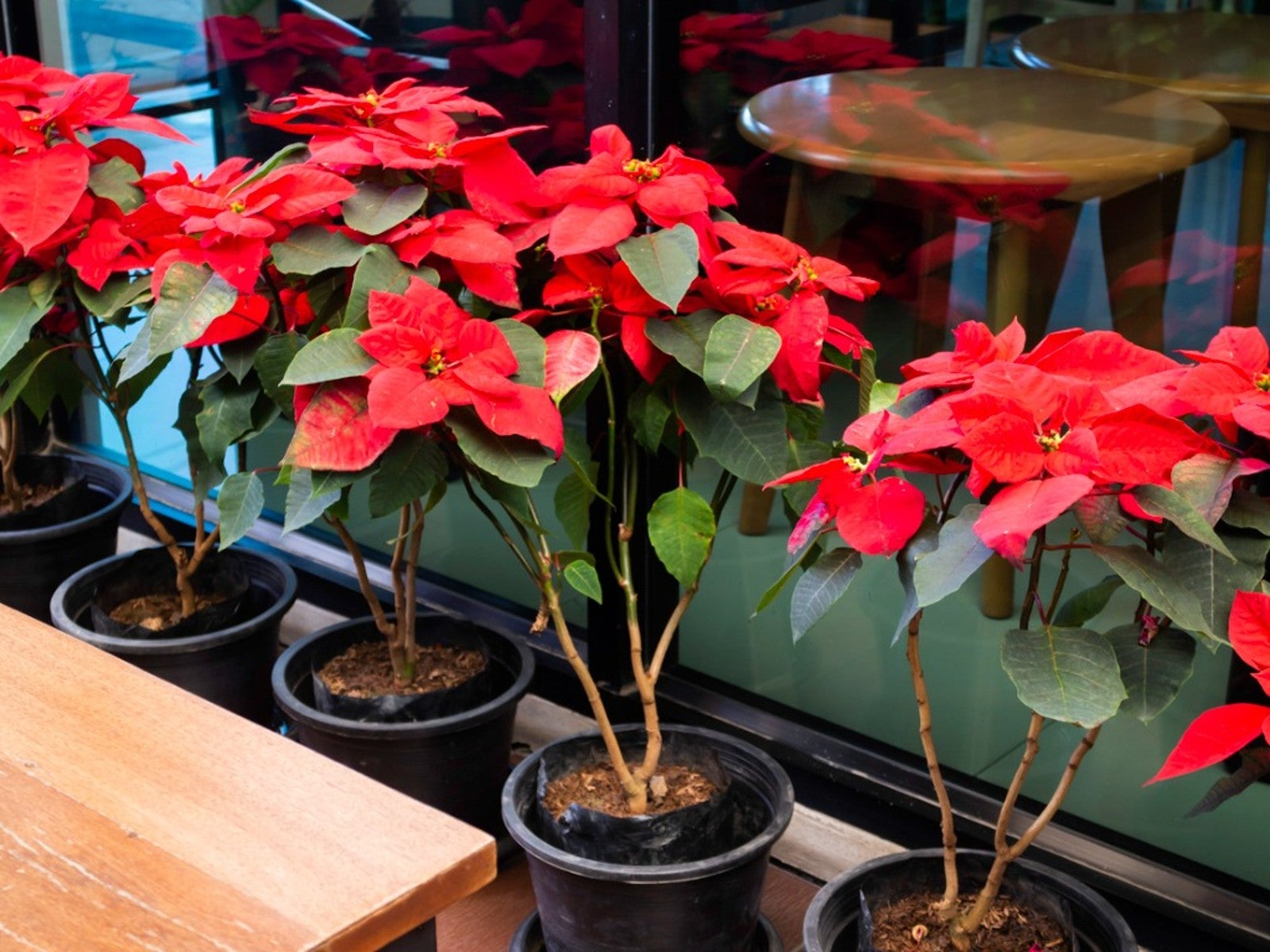How To Grow A Poinsettia Tree For The Holidays


Among the most popular ornamental flowers, seasonal poinsettias have long been a favorite house plant, used to brighten indoor spaces throughout the winter months. A type of euphorbia, these showy plants produce brilliant red bracts. Though most gardeners are quite familiar with many types of poinsettia, some may be surprised to learn that the poinsettia is actually a type of tree. Continue reading for some poinsettia tree care tips.
How to Care for a Poinsettia Tree
Within their preferred range, outdoor poinsettia plants can grow to reach impressive heights. Though highly ornamental, these frost sensitive shrubs are simply not able to survive outside very specific growing conditions. Over the years, however, many plant professionals have taken great interest in replicating this same growth habit in new ways to make it more accessible to home gardeners. This passion, in tandem with the plant’s natural popularity, would eventually give way to the creation of much smaller, cultivated poinsettia trees.
Though created for ornamental use indoors, in containers, poinsettia topiary trees are generally much larger than the smaller potted types that are frequently found at retailers throughout late fall and winter. First, growers focus on the formation of a strong central stem. This is achieved through regular pinching and pruning. Additional leaves and branches are also removed throughout the process to create a distinctive tree-like form. As the production of these unique plant types does require much more labor in order to achieve the desired result, consumers can expect a comparatively higher price tag. Among the most popular live poinsettia tree varieties are ‘Independence,’ ‘Infinity Red,’ and ‘Snowcap.’
The needs of topiary poinsettias are very similar to that of their smaller counterparts. Each will require at least six hours of bright light in order to grow best. Poinsettias should always be positioned in a warm place, kept safely away from cold drafts, heating vents, or other variables that may cause unexpected changes in temperature. Soil should drain well and be kept consistently moist, making certain to avoid overwatering. As with any indoor plant, poinsettia trees will need routine monitoring to avoid troubles with common insects, like aphids or spider mites.
Though it is possible to continue growing poinsettia plants throughout the winter, encouraging them to produce colorful bracts the following season may be difficult, and will require special care. This special care includes the continued removal of new branches, selective pruning of leaves to maintain the plant’s tree shape, as well as very specific day-length exposure requirements. Home growers can meet these requirements by moving the poinsettia plants into a dark place for a set duration each day, around the time of the fall equinox.
Gardening tips, videos, info and more delivered right to your inbox!
Sign up for the Gardening Know How newsletter today and receive a free copy of our e-book "How to Grow Delicious Tomatoes".

Tonya Barnett has been gardening for 13 years. Flowers are her passion. She has transformed her backyard into a cut flower garden, which she regularly chronicles on her YouTube channel http://www.youtube.com/@tonyawiththeflowers.
-
 Get Ready For A Summer Of Hummers! Grow These Full Sun Hummingbird Plants and Flowers
Get Ready For A Summer Of Hummers! Grow These Full Sun Hummingbird Plants and FlowersIf you’re lucky enough to enjoy a sunny backyard, make sure you are maxing out on your pollinator opportunities and grow these full sun hummingbird plants and flowers
By Tonya Barnett
-
 12 Lush Alternatives To A Lawn For Sustainable Spaces
12 Lush Alternatives To A Lawn For Sustainable SpacesAlternatives to a lawn are beautiful and also beneficial to your local ecosystem and its pollinators. Explore our top picks for plants to replace grass.
By Tonya Barnett